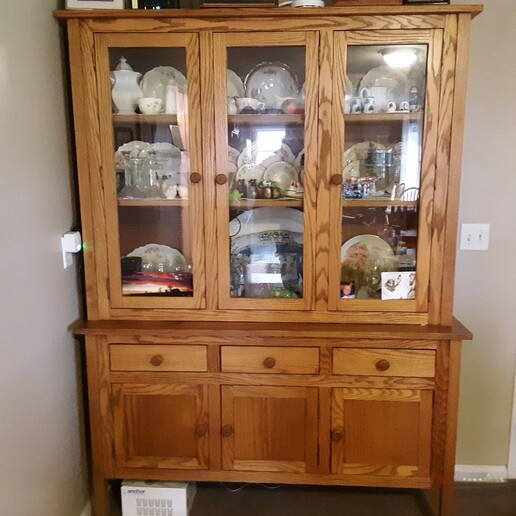MarkB_MI
Well-known Member
- Location
- Motown USA
I was going to reply to Crazy's reply to Stan ('Fence boards'), but thought I'd start a new thread.
I've found finished board thickness to be very inconsistent over the years. We all know a 'one inch thick' finished board is really 3/4 inch thick. Presumably that's because back in the day, after you planed an eighth of an inch off either side of a roughsawn board you ended up with 3/4 inch, more or less. But I bought some 1x6 white cedar about twenty years ago that was actually 5/8 inch thick. Why? I have no idea, but these were clear boards and fairly expensive. I tried to buy some more a couple of years ago at the same lumberyard but they no longer carry the stuff.
Roughsawn lumber used to be 7/8 inch thick, which made sense: If you only plane one side of a roughsawn board, you'll only take off 1/8 inch. But I bought some roughsawn cedar the other day and it was 3/4 inch thick. Apparently lumber mills realized they were giving away an eighth of an inch of wood. The interesting thing is a 'roughsawn' board isn't really roughsawn anymore as there are NO SAW MARKS. Instead, it looks like they use some sort of machine that tears up the grain and gives the wood a weathered appearance. I was using some of these boards indoors, so I actually sanded the rough surface to get rid of the splinters. My assumption is the lumbermills are using saws these days that require almost no planing, so it's necessary to rough up the 'roughsawn' wood to get a rough appearance.
I did get a couple of boards that actually were roughsawn. Those were about 13/16 inch thick, a bit thinner than the old stuff. I assume they came from a different mill than 3/4 inch thick boards.
I've found finished board thickness to be very inconsistent over the years. We all know a 'one inch thick' finished board is really 3/4 inch thick. Presumably that's because back in the day, after you planed an eighth of an inch off either side of a roughsawn board you ended up with 3/4 inch, more or less. But I bought some 1x6 white cedar about twenty years ago that was actually 5/8 inch thick. Why? I have no idea, but these were clear boards and fairly expensive. I tried to buy some more a couple of years ago at the same lumberyard but they no longer carry the stuff.
Roughsawn lumber used to be 7/8 inch thick, which made sense: If you only plane one side of a roughsawn board, you'll only take off 1/8 inch. But I bought some roughsawn cedar the other day and it was 3/4 inch thick. Apparently lumber mills realized they were giving away an eighth of an inch of wood. The interesting thing is a 'roughsawn' board isn't really roughsawn anymore as there are NO SAW MARKS. Instead, it looks like they use some sort of machine that tears up the grain and gives the wood a weathered appearance. I was using some of these boards indoors, so I actually sanded the rough surface to get rid of the splinters. My assumption is the lumbermills are using saws these days that require almost no planing, so it's necessary to rough up the 'roughsawn' wood to get a rough appearance.
I did get a couple of boards that actually were roughsawn. Those were about 13/16 inch thick, a bit thinner than the old stuff. I assume they came from a different mill than 3/4 inch thick boards.


